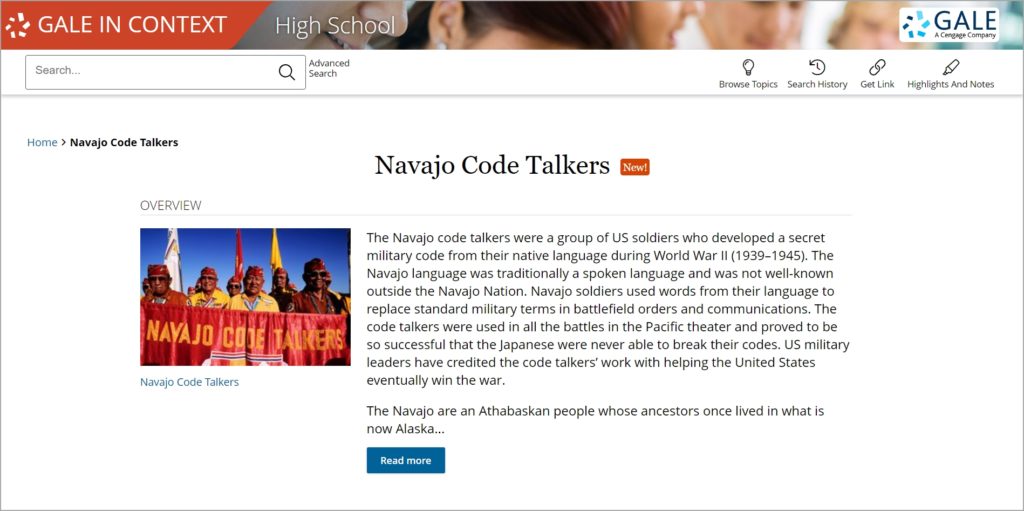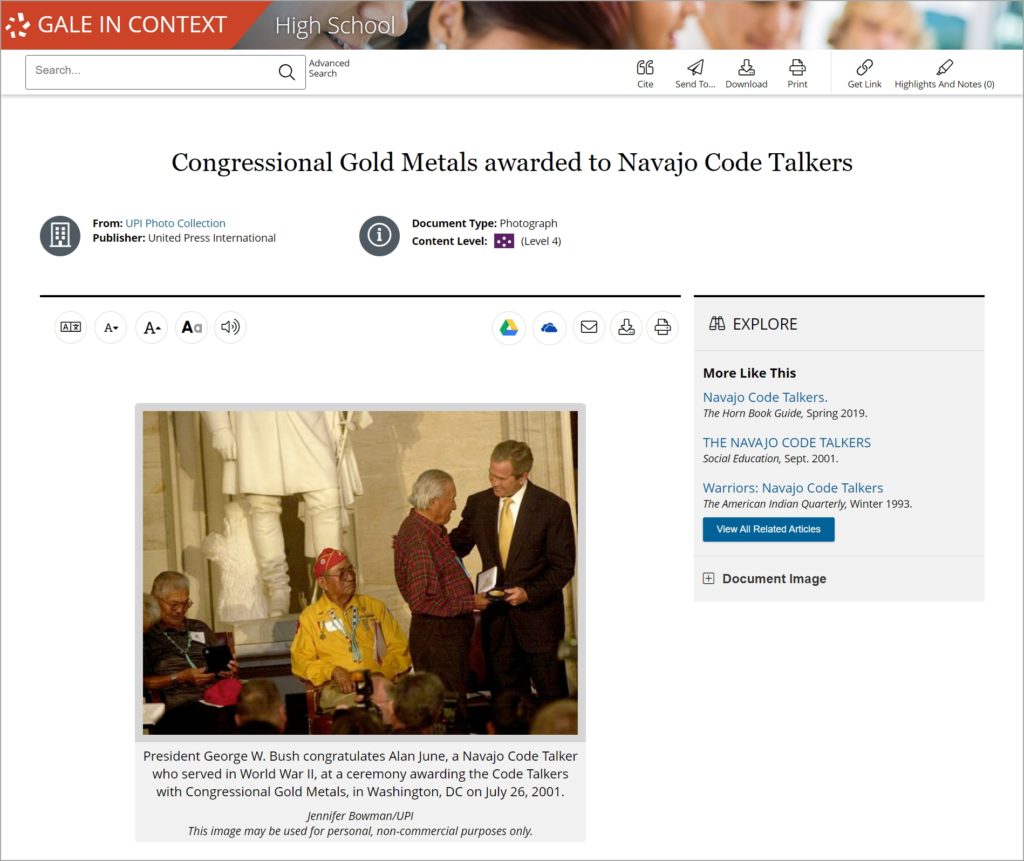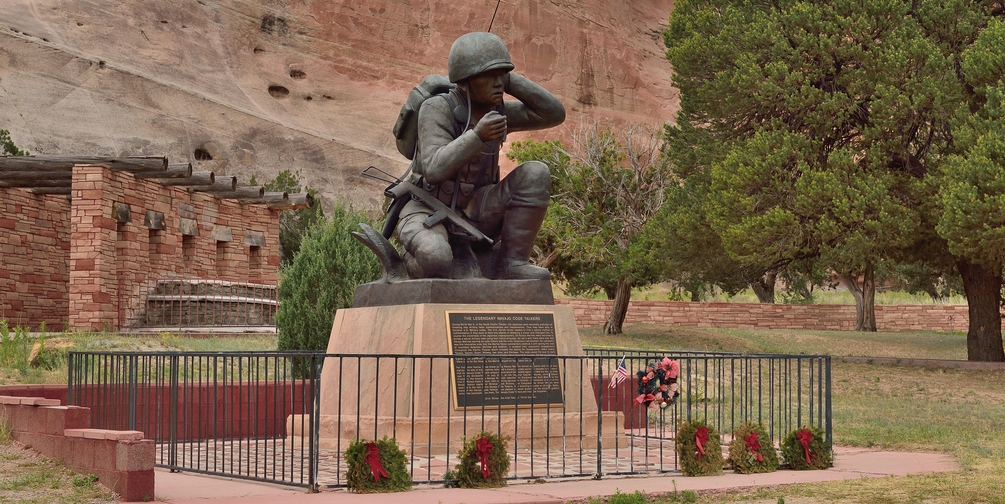| By Elizabeth Mohn |
Each November, Americans commemorate Native American history, culture, and contributions during Native American Heritage Month. This year, we would like to highlight the vital contributions of the Navajo code talkers. During World War II (1939–1945), this group of Navajo men helped the US military by creating a code based on their complex language. The code, which was never cracked during the war, gave the military a critical advantage, particularly in the Pacific theater. Teachers can help students better understand the contributions and sacrifices of these Native Americans through the new Navajo Code Talkers portal from Gale In Context: High School.

Teachers can ask students to read the Navajo Code Talkers overview to learn about their origins and experiences during the war. Teachers can also guide students to review and answer the Critical Thinking Questions in the article to help ensure they understand the basics of the subject before exploring more information. Next, teachers can guide students to learn more about specific individuals who served as code talkers. For example, teachers could guide students to read the new biography of Chester Nez. They could also have students read a news article about Samuel Sandoval’s life and legacy. Students could also read this magazine article, which contains an adaptation of an interview with code talker Keith Little. This resource allows students to hear about the code talkers’ experience from one of the men themselves.
Because Gale In Context: High School provides numerous types of resources, students who prefer learning through pictures and audio clips will also have many topics to explore. For example, students can access images showing the first group of code talkers sworn into the US military in 1942, the Navajo Code Talkers Memorial, and the code talkers receiving the Congressional Gold Medal in 2001. Students can also learn about the obstacles that code talkers faced decades after serving in the military through this audio clip. The story tells about inadequate housing and dangerous living conditions that nearly 9,000 Navajo veterans—and thousands of other Navajo—faced in the 2010s on their reservation. Teachers can use that clip to help foster a discussion about promises made and broken to the Navajo people and other Native American groups.

The story of the Navajo code talkers is interesting and inspiring, and students who wish to dive deeper can learn about the public holiday in Arizona that honors the code talkers each year in this magazine article. They can also access the official Naval History and Heritage Command website to see a copy of the entire Navajo code talkers’ dictionary. Students can see what words and phrases the code talkers used. For example, they will see that the Navajo phrase WOL-LA-CHEE means “ant” in English and that the Navajo phrase MA-E means “fox.”


About the Author
Elizabeth Mohn is a writer and an educational content developer. When she’s not reading or writing, Elizabeth is usually spending time with her family, listening to podcasts, or working in her garden.

